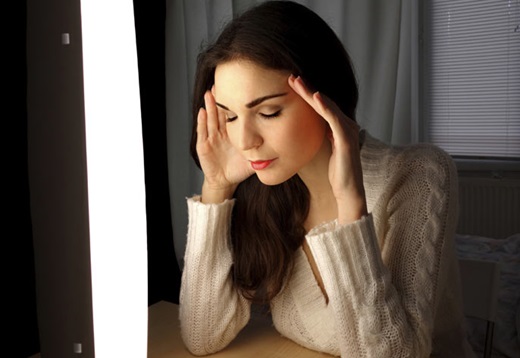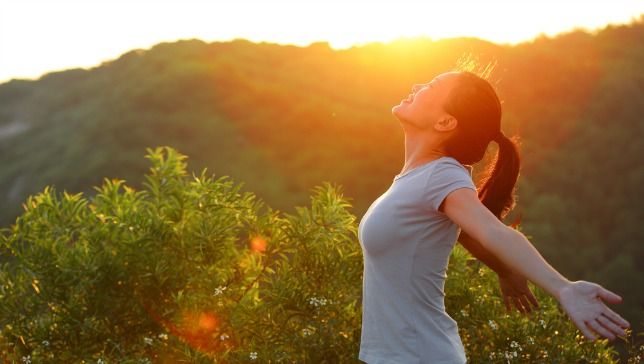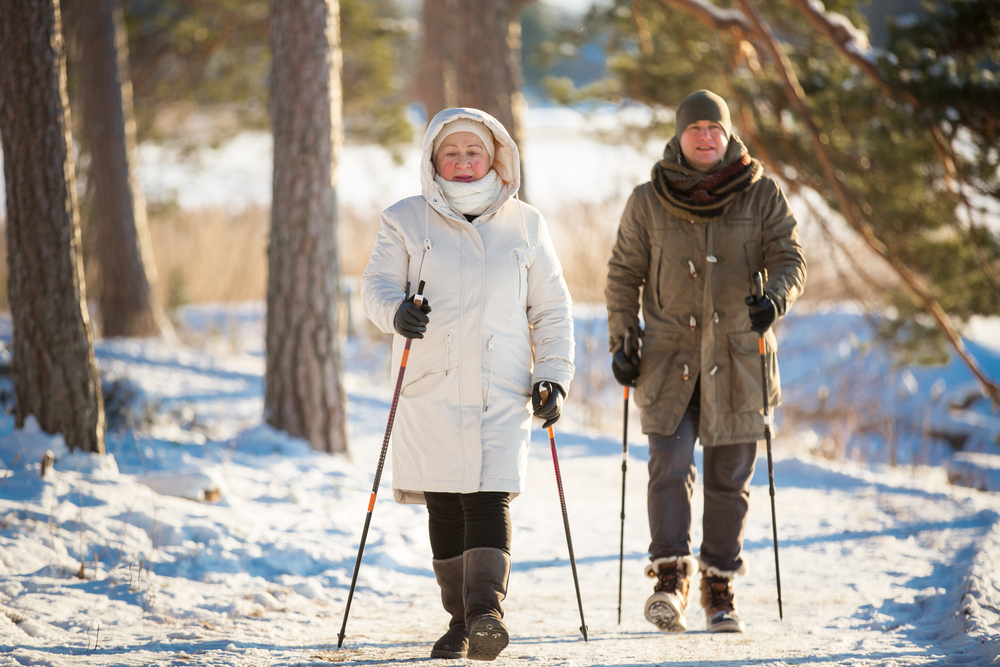
🌧️ How to Fight Seasonal Depression Naturally
Gentle, Practical Ways to Boost Your Mood During the Darker Months
When the days get shorter and the skies stay gray for weeks, it’s not just the weather that takes a hit—your mood can sink right along with it. If you’ve ever noticed feeling down, sluggish, anxious, or just not quite yourself in the fall or winter, you might be dealing with Seasonal Affective Disorder (SAD)—also known as seasonal depression.
The good news? You’re not alone, and more importantly, there are natural, effective ways to manage and ease those seasonal mood dips—without jumping straight into medication.

Let’s explore everything from light therapy and movement to nutrition, routines, and nature-based strategies that can help you feel brighter, even when the sun is hiding.
☀️ What Is Seasonal Depression?
Seasonal depression (SAD) is a type of depression that follows a seasonal pattern—most often beginning in late fall or early winter and lifting as spring rolls around.
Common symptoms include:
- Low energy or constant fatigue
- Feeling hopeless, sad, or empty
- Trouble concentrating
- Changes in sleep (too much or too little)
- Changes in appetite (especially carb cravings)
- Social withdrawal (“winter hibernation”)
- Loss of interest in things you normally enjoy
It’s believed to be caused by a combination of reduced sunlight, changes in melatonin and serotonin levels, and disrupted circadian rhythms—all of which impact your body’s internal clock and mood regulation.
🌿 Natural Ways to Fight Seasonal Depression
Below are proven, natural strategies you can start using right now to lift your mood, boost your energy, and help your mind stay balanced during the darker months.
1. Soak Up the Sun (Even a Little Helps)

Lack of sunlight is one of the biggest triggers for SAD. Whenever possible:
- Step outside during midday, even if it’s cold.
- Sit by a sunny window while working or eating.
- Take a short morning walk before starting your day.
☀️ Even just 15–30 minutes of natural light a day can help reset your circadian rhythm and improve your mood.
2. Try Light Therapy
If sunlight is limited where you live, light therapy boxes (also called SAD lamps) can be a game-changer.
- Look for one with 10,000 lux brightness
- Use it for 20–30 minutes each morning
- Place it 16–24 inches away, slightly off-center—not directly in your eyes
Light therapy works by mimicking natural sunlight, stimulating serotonin production and regulating your sleep-wake cycle.
3. Move Your Body Daily
Exercise is a natural mood-booster—thanks to those feel-good endorphins and dopamine it releases.
Try:
- Morning stretching + walking
- Dancing to music while cleaning
- Yoga or Pilates (indoors with a window open)
- Resistance training or a winter hike
⏱️ Just 20 minutes of moderate movement a day can help reduce symptoms of depression.
4. Focus on Mood-Friendly Nutrition
Your diet has a powerful impact on your mental health.
Aim to eat more of:
- Leafy greens (spinach, kale)
- Omega-3s (salmon, walnuts, chia seeds)
- B vitamins (especially B6 and B12 from eggs, lentils, or fortified cereals)
- Tryptophan-rich foods (turkey, oats, bananas)
- Probiotics (yogurt, kefir, kimchi)
Reduce or limit:
- Processed sugar
- Excess caffeine
- Alcohol (which acts as a depressant)
5. Get Outside (Even When It’s Cold)

Bundle up and take a walk. Exposure to fresh air and nature, even in winter, helps reset your internal clock, reduces anxiety, and lifts mood.
Ideas:
- Walk a scenic trail or park
- Shovel snow or garden
- Sit by a tree or river with a thermos of tea
6. Support Your Sleep Schedule
When it’s dark early, your sleep rhythm can go out of whack. Try:
- Going to bed and waking up at the same time every day (yes, even weekends)
- Avoiding screens at least 60 minutes before bed
- Creating a cozy, tech-free sleep zone
- Using blackout curtains and a sunrise alarm clock
😴 A solid 7–9 hours of quality sleep is essential for emotional regulation and mental clarity.
7. Use Uplifting Scents and Sounds
Your senses can play a surprising role in your mental health.
- Essential oils: Diffuse citrus, peppermint, lavender, or eucalyptus
- Play music: Light classical, jazz, or upbeat lo-fi beats
- Use sound therapy: Try nature sounds or binaural beats for focus and calm
8. Journal or Practice Daily Gratitude
Writing things down can help you process emotions, clear your head, and find perspective.
- Start or end your day with 3 things you’re grateful for
- Use journal prompts like:
- “What brought me joy today?”
- “What emotions am I feeling right now?”
- “What’s one small thing I can do to take care of myself?”
9. Take Vitamin D Supplements
Low vitamin D is common in winter and strongly linked to SAD. Talk to your doctor about:
- Getting your vitamin D levels tested
- Taking 1,000–4,000 IU per day, especially in dark months
10. Connect With Others (Even if You Don’t Feel Like It)

Isolation can make seasonal depression worse, so don’t wait to reach out.
- Schedule regular check-ins with friends or family
- Join a hobby group, book club, or class (online or local)
- Volunteer your time or help someone else—it boosts oxytocin and purpose
Even small moments of connection can significantly improve your emotional state.
Table of Contents
❓ Frequently Asked Questions About Seasonal Depression
Q: Is seasonal depression the same as regular depression?
No—while they share similar symptoms, SAD is seasonal and often lifts during spring/summer. However, it can still be severe and needs attention.
Q: Does everyone get SAD in winter?
No, but it’s surprisingly common. About 5% of adults in the U.S. experience SAD, and 10–20% may have a milder version known as the “winter blues.”
Q: Is light therapy safe?
Yes! It’s generally safe and effective. However, consult your doctor if you have bipolar disorder, eye conditions, or are on photosensitive medications.
Q: Can I treat SAD without medication?
Yes—many people successfully manage SAD through natural remedies, therapy, and lifestyle changes. But if your symptoms are severe, don’t hesitate to talk to a mental health professional about options.
Q: How long does it take for natural treatments to work?
Light therapy and lifestyle changes can show improvement in as little as one week, but consistent practice over time brings the best results.
✅ Conclusion: You’re Not Powerless—You’re Prepared
Seasonal depression can feel heavy, lonely, and hard to explain—but it’s real, valid, and treatable. And the truth is, you don’t have to suffer silently or wait for spring to start feeling better.
With a little effort and intention, you can build a winter wellness routine that lifts your mood, energizes your body, and helps you reconnect with yourself—even when the world outside feels gray.
Start small. Go for a walk, sip some tea by a window, or light a scented candle. Layer in these habits slowly until you create your own version of seasonal self-care.
Because you deserve to feel well—all year round.
🧾 Winter Mood Survival Checklist
| ✅ Tool | 💡 Tip |
|---|---|
| Light Therapy | Use daily for 20–30 mins in the morning |
| Movement & Exercise | Aim for 20–30 mins, 3–5x a week |
| Sleep Support | Stick to a regular schedule, reduce screen time |
| Whole Foods Nutrition | Prioritize omega-3s, leafy greens, B vitamins |
| Natural Supplements | Consider vitamin D, magnesium, or omega-3s |
| Connection & Community | Reach out, talk to someone, join a group |
| Emotional Expression | Journal, create, or practice gratitude daily |
| Fresh Air & Nature | Get outside even in the cold—sunlight matters! |
